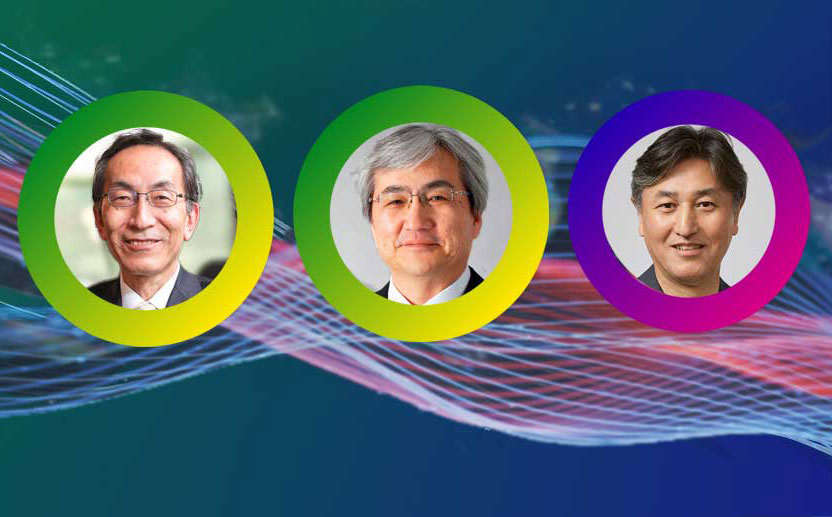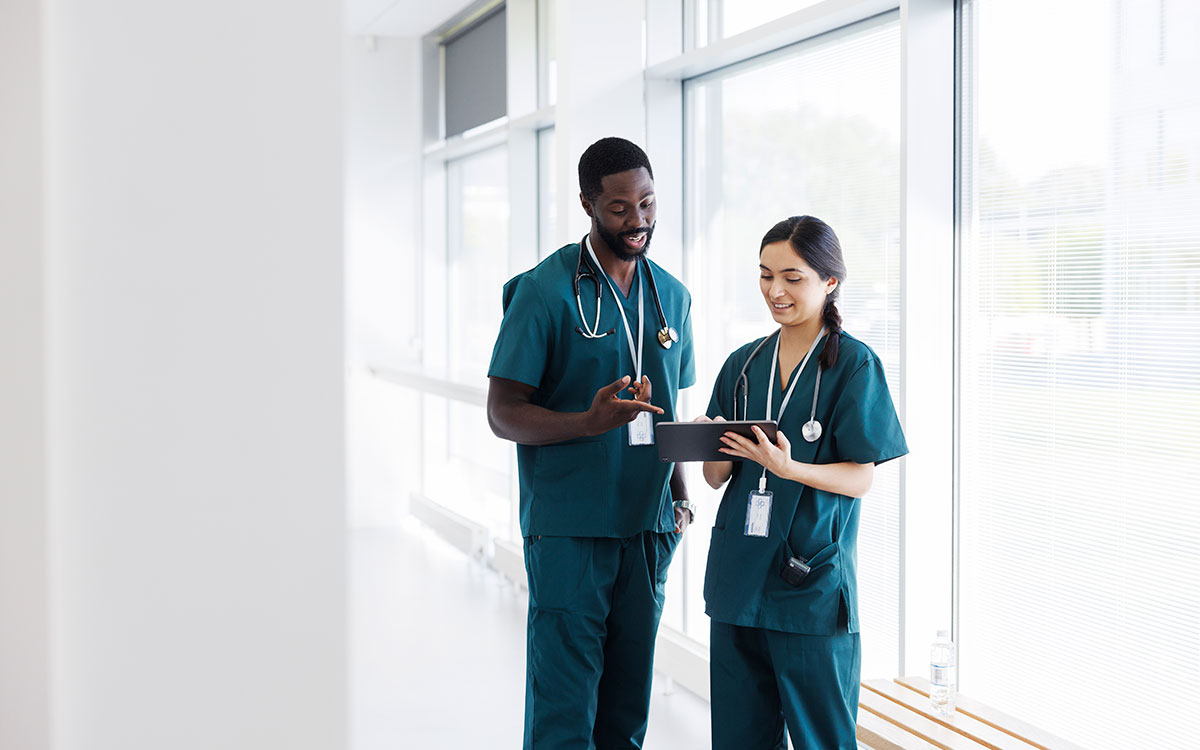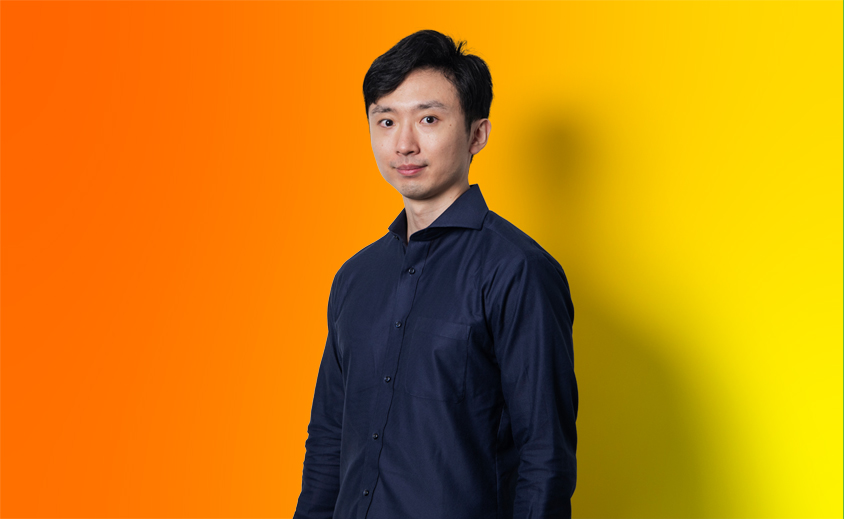Augmenting human expertise with AI to detect brain aneurysms and save lives
Fujitsu / April 20, 2022
Fujitsu is committed to creating a sustainable world by connecting people, technology, and ideas. Project Sagasu, the creation of AI-enabled diagnostic technology, is designed to help radiologists quickly and efficiently detect brain aneurysms, and embodies this commitment.
Launched in 2019, in collaboration with GE Healthcare and Macquarie University, the project has just completed Phase 1, the initial research. Backed by Fujitsu’s extensive global R&D resources, GE Healthcare’s leading imaging technical expertise and a $2-million research grant from the Australian government, the project has the potential to transform healthcare in Australia and around the world.
To shed light on this project and the collaboration that makes it possible, we spoke with Ramy Ibrahim, Head of Industry innovation at Fujitsu. In this interview, he explains the significance of the AI-enabled diagnostic technology that is the cornerstone of the project and its potential to dramatically improve the efficiency of diagnosis of brain aneurysms.
Creating a commercially viable healthcare solution
Can you help us understand what brain aneurysms are and what challenges they pose to the medical community?
Ramy Ibrahim (Ramy): Brain aneurysms affect anywhere between 2% to 3% of the global population. The condition occurs when the wall of a blood vessel in the brain is weak and starts to form a balloon. When the vessel changes shape, there is a risk of it bursting, and that could cause internal bleeding in the brain (a stroke). Some of this is genetic: aneurysms can happen more often if the condition already runs in your family. They can also occur due to behavioral factors, such as smoking.
Medical intervention is needed to detect the aneurysm prior to its rupture and to monitor and/or treat it beforehand. Detection is hard, because we're looking at CT scans—multiple 2D slices of your brain—and trying to detect where an aneurysm might be located. It could be as small as one millimeter or as large as 20 millimeters. Right now, diagnosis is achieved by expert radiologists. This is expensive in terms of human resource demands, and reading a scan can take an expert radiologist anywhere between 15 and 20 minutes. It's not like an X-ray that you can analyze within a few minutes.
Why are you interested in this field?
Ramy: Healthcare is one of our key focus areas both regionally and globally. This means supporting healthy living and providing solutions that align with our purpose* of bettering society through human-centric innovation. Personally, I've got a passion for healthcare. My father and my father-in-law are doctors, so the health profession is well entrenched in my family.
*Fujitsu Group’s Purpose
Our Purpose is to make the world more sustainable by building trust in society through innovation
How did you get involved in this project and what do you hope to accomplish?
Ramy: We hope to provide a commercially viable product to the market. We want to create AI that helps radiologists care for their patients faster and more effectively in real-world scenarios.
I got involved with this project because a former manager at Fujitsu came up with the idea to leverage IP [intellectual property] from Fujitsu Laboratories and apply it in the Oceania region through my collaboration with Macquarie University. We talked with their expert clinicians, and they presented this idea. So, I facilitated this process by presenting the business case to Fujitsu.

AI designed to augment the role of radiologist
What role does Fujitsu’s technology play in this project?
Ramy: Fujitsu was responsible for the AI component, and we created the AI for this project. We collected all the CT image data and applied a research process of multiple trial and error to determine the best technical approach for an effective and accurate AI capable of detecting an aneurysm across multiple greyscale image slices.
Why is AI important when it comes to detecting brain aneurysms?
Ramy: One reason is the shortage of skilled staff to detect aneurysms. We're talking about expert radiologists that need to look at CT scans. As with any human process there are errors and omissions, and with radiologists of differing expertise across the healthcare system, the rate of missed aneurysms can be as high as 20%**. So, there are two benefits from adopting AI. One benefit is to increase efficiency by augmenting those experts with an AI to help them look at scans faster. The other benefit is that AI can also help increase accuracy of detection. It’s not about replacing the radiologist. It’s about supporting the radiologist. We're hoping that with a combination of humans and AI, the overall rate of detection of aneurysms will be improved.

An AI solution like no other
How does this AI-enabled diagnostic technology differ from existing solutions?
Ramy: We've seen some existing research in the field. It's quite a complex area. However, so far there is no widely adopted commercial AI offering to comprehensively meet this need.
Some other solutions handle various aspects of this problem. Once you detect an aneurysm, it is possible to use existing software to measure it. There is other software that semi-automatically conducts a full blood vessel reconstruction and 3D rendering, which can be helpful in finding an aneurysm. However, due to inherent errors these 3D reconstructions cannot be relied upon for clinical diagnosis.
Our approach is completely different. Before a radiologist looks at a scan, our AI automatically identifies areas of interest. Other solutions out there enable 10 or 20% of the process.
The project received a $2-million research grant from the Australian government. What is the significance of this grant and the government’s interest in the project?
Ramy: The government looks to fund research locally in collaboration with industry in an effort to increase the rate of translation and adoption of research that would eventually benefit the Australian economy. Part of their criteria is that we needed a local small- to medium-sized enterprise to work with, which was Macquarie Medical Imaging and a research institution, which was Macquarie University. Also, the research had to be commercially focused and ideally create jobs in the Australian economy. We were delighted to receive this funding and believe it shows a real statement of confidence in the potential of this technology.

The challenge of creating an AI system that serves the medical field
What challenges have you faced while working on the project?
Ramy: We entered a new field by creating an AI for this application. So, the challenge we faced was the sheer amount of data required to train our AI. For example, if you need to train an AI about a car, you can find hundreds of thousands of pictures of a car to do so. Quality annotated brain scans, however, are not that easy to get. We're only able to present the AI with about 400 fully annotated patient cases, which is quite low from a training perspective. However, we still needed to provide something that's accurate because it's going to be used in healthcare.
Secondly, the sheer complexity of detecting an aneurysm in a CT scan is just technically a difficult thing to do. We're talking about detecting the shape of an aneurysm, which is a shade of grey in a varied grey background and very difficult to differentiate from a normal blood vessel. This is hard for a skilled radiologist to detect, let alone an AI with a relatively low amount of training images.
How did you overcome these challenges?
Ramy: We have a consortium of partners, including GE Healthcare, Macquarie University and their radiology clinic (Macquarie Medical Imaging). We have used our human centric design (HXD) workshop methodology to produce a series of novel ideas and solutions to significantly improve the AI accuracy without the need for a larger pool of input data. Working with our AI engineers in Japan, we were able to generate a series of patent-pending approaches that increased our sensitivity rate, which is a measurement of accuracy from 50% to over 90%.

Making an impact: what the future holds for AI-enabled diagnostic technology
What aspect of this project are you most excited about?
Ramy: There are two aspects that I’m excited about. One is seeing this project through, from start to end. Seeing it adopted commercially and benefiting real patients would be very exciting.
We have the potential to provide radiologists with a solution that will help them with their day-to-day work. After that, I can imagine applying our approach to other blood-related diseases in the brain or outside the brain—the heart, lungs, and more. That first step of providing an augmented AI for radiologists is a great foundation for the future of this project.
Equally as exciting is our partnership with GE Healthcare and creating a model for Fujitsu to take forward into other projects. We’re working as a joint business having a common purpose to transform healthcare —beyond a traditional supplier and provider relationship. It’s quite exciting to prove that this arrangement can work.

Is there a particular philosophy or motto that motivates, excites, or inspires you in work or life?
Ramy: For me, it's always about the combination of the brainpower of different people and the potential that provides. Fujitsu created the AI for this project, but we couldn’t increase its accuracy until we started working with partners to come up with an approach. That's what motivates me. One person alone might be smart, but the potential of multiple people collaborating is when you can really achieve something transformational.
Working together and co-creating for a common purpose really made this project successful. It's not a typical project, and we faced many challenges. However, we were able to overcome them by using our co-creation approach. This is evident in the results.
Learn how maximizing life experiences unleashes everyone's potential
Healthy Living
Fujitsu introduced a key focus area called ‘Healthy Living’ as a part of its business brand, Fujitsu Uvance.
We will create a world that enriches the life experience of everyone and continues to expand their potential.

Related information
Editor's Picks












